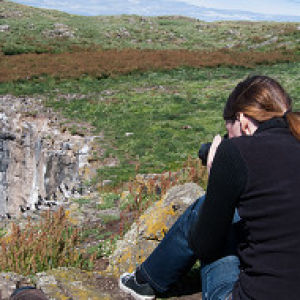Nomadic life, part 2
Nomadic life in Mongolia is hard. It seems that some things haven’t changed for centuries but nomadic families have been able to make their lives easier through modern technology. Mongolian gers (yurts) haven’t changed much structurally. They are made with a wooden structure and wrapped in felt made from wool (they use more layers of felt for better insulation in the winter) with a waterproof outer layer. There’s a stove that burns either wood or animal dung depending on the available fuel; in the Gobi it’s animal dung. These days people have solar panels and car batteries to provide electricity for lighting, satellite TV and charging their phones. There’s no running water and I was told they transport water from nearby wells using a motorbike. A ger can be packed up and moved to another location in one day. It used to be transported using animals but now it’s usually a truck.
Despite the vast distances and nomadic way of life in the countryside, Mongolia has a 98% literacy rate. Children from nomadic families go to school in the nearest town during the week and live in the town with their grandparents then return to their parents for the weekend.
There’s virtually no infrastructure for tourism in the Gobi. There are a few ‘luxury tourist camps’ (specially built gers) near popular places. The other option for accommodation is better for the local economy – staying with nomadic families. They earn extra cash in return for having visitors sleep in a spare ger. And visitors get a glimpse of the nomadic life.
This is the ger (and some of the animals) belonging to the first family we stayed with. We arrived on Friday afternoon and on the way we picked up the kids and their grandmother from the town as they had finished school for the week.
Saturday morning was cold and grey. The animals spend the night near the ger where they can be protected from wolves and just after I took this shot the animals went off to find grazing. We were up an hour early because we didn’t know that Mongolian daylight savings time ended! The extra (if it loads ok) is of the Erdene Zuu Khiid monastery at Kharkhorin, built in the 16th Century. The light was really flat and the colours of the monastery looked really dull. After visiting the monastery we drove south for the rest of the day, over bumpy dirt roads, into the Gobi.

Comments
Sign in or get an account to comment.


